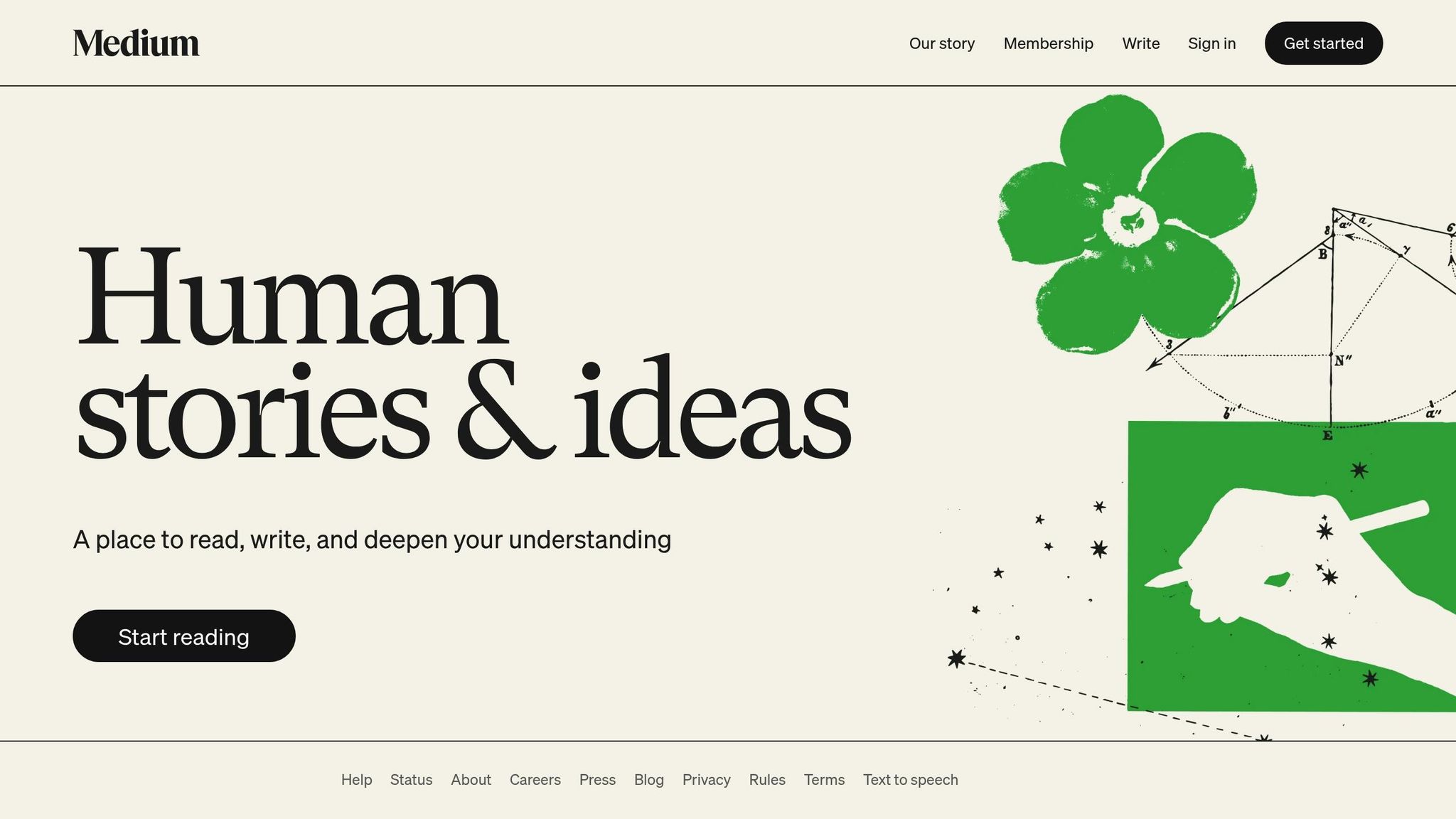Last Updated on September 17, 2025 by Becky Halls
Backlinks are still one of the biggest ranking boosters in SEO, but let’s be honest… not all links are worth chasing. A link from a random low-quality site? Pretty useless. A link from a heavyweight like Medium (DA 95)? That’s pure SEO gold. In this guide, we’ll break down how to actually land backlinks from Medium, boost your authority, and do it all the right way with no dodgy tactics needed.
Why Backlinks Matter
Before diving into the how-to, let’s briefly revisit why backlinks are essential for SEO:
- Improved Domain Authority (DA): Backlinks from trusted sites signal to search engines that your site is credible and authoritative.
- Better Search Rankings: High-quality backlinks can elevate your content in search engine results pages (SERPs).
- Increased Organic Traffic: When users land on your site through backlinks, it creates opportunities for engagement and conversions.
However, not all backlinks are beneficial. As covered in the video, it’s crucial to assess the quality of the source site to avoid spammy links that can harm your SEO efforts. That’s where Medium comes in.
Why Choose Medium for Backlinks?

Medium is a popular content platform that supports article publishing, boasting an impressive DA of 95. Here’s why it’s a goldmine for backlinks:
- High Domain Authority: With a DA of 95 and over 2 million monthly visits, Medium is a reliable platform for gaining link equity.
- Content Syndication: Medium allows you to republish your existing blog articles, ensuring minimal effort.
- Interactive Features: You can include links in both posts and comments, offering multiple ways to build backlinks.
Now, let’s get into actionable steps for leveraging Medium to secure high-quality backlinks.
Step 1: Conduct a Preliminary Site Analysis
Before adding your link to any website, it’s important to assess its quality. The video emphasizes using tools like Moz Site Overview or similar backlink checkers to evaluate a platform’s Domain Authority, Page Authority, and spam score. Here’s how you can analyze Medium:
- Verify Domain and Page Authority:
- Medium’s current DA is 95, and its Page Authority (for individual pages) is around 85.
- Such metrics indicate it’s a trustworthy and authoritative platform.
- Check Backlink Health:
- Use a backlink checker tool to confirm that Medium has quality backlinks from other reputable domains.
- As shown in the video, Medium boasts 78 million backlinks from over 943,000 domains.
- Assess Spam Score:
- Ensure the platform has a low spam score to avoid any negative impact on your site.
Once Medium checks out as a safe and effective option, you can move forward with confidence.
Step 2: Create a Free Medium Account
To interact with Medium and start building backlinks, you first need to create an account. Registration is straightforward and unlocks two key backlinking methods:
- Adding Links via Comments
- Publishing Articles with Embedded Links
Let’s dive into each method.
Step 3: Backlinking Through Comments
The simplest way to secure backlinks on Medium involves using the comment section of popular articles. Here’s how to do it:
- Search for Relevant Articles:
- Use Medium’s search bar to find articles related to your niche. For example, if your website focuses on travel, look for posts within the “Travel” category.
- Engage Authentically:
- Add a meaningful comment that contributes to the discussion. Avoid spammy or promotional language.
- Use relevant keywords naturally and hyperlink your website within the comment text. For instance:
- “This article offers great insights into travel tips. I recently wrote about traveling through Europe, which aligns with some of the suggestions mentioned here.”
- Prioritize Quality Over Quantity:
- Focus on leaving comments on high-traffic posts to maximize visibility.
- Ensure your link is embedded within contextually relevant text to capture keyword value.
Step 4: Publishing Articles on Medium
While comments are an easy way to get backlinks, publishing articles on Medium is far more effective. Here’s the step-by-step process:
1. Repurpose Existing Content
- Take an existing blog post from your website and republish it on Medium. This process is quick and doesn’t require creating new content from scratch.
2. Add Source Attribution
- Medium allows you to indicate that the article was originally published on another platform. Include your blog post’s URL as the source link to avoid duplicate content penalties.
- Example: “This article was originally published on YourWebsite.com.”
3. Embed Backlinks Strategically
- Within your Medium article, embed one or two links to your website. Focus on linking to specific pages using targeted anchor text. For instance:
- Instead of: “Click here for more.”
- Use: “Explore our ultimate guide to traveling through Europe.”
4. Optimize Images and Alternative Text
- Add alt text to all images in your Medium article to improve their search visibility and align with SEO best practices.
5. Configure SEO Settings
- Medium allows you to customize the article’s SEO settings, including the title and meta description. Optimize these fields with primary keywords to boost discoverability.
6. Publish and Share
- Once your article is ready, publish it and share the link across your social media channels or newsletters to boost engagement.
Step 5: Track the Performance of Your Backlinks
After publishing your article or commenting, monitor the performance of your backlinks. Use tools like Moz, Ahrefs, or SEMrush to:
- Check whether Medium appears in your backlink profile.
- Assess referral traffic directed to your site from Medium.
- Ensure the backlinks improve keyword rankings over time.
Key Takeaways
- Evaluate Backlink Sources: Always assess a website’s Domain Authority, Page Authority, and spam score before adding backlinks.
- Maximize Medium’s DA 95: Leverage Medium’s authority by embedding contextual backlinks in posts and comments.
- Republish Content Safely: Repurpose your blog articles with source attribution to avoid duplicate content issues.
- Embed Links Strategically: Use relevant anchor text to maximize SEO value for your backlinks.
- Don’t Overdo It: Quality trumps quantity. Focus on one or two well-placed backlinks per post or comment.
- Optimize for SEO: Configure Medium’s SEO settings, including alt text for images and meta descriptions, for better visibility.
- Monitor Results: Regularly check the impact of your Medium backlinks using analytics tools.
- Avoid Spam: Engage authentically on Medium to build trust and credibility.
Conclusion
Medium is a powerful yet underutilized tool for building high-quality backlinks. Whether through comments or articles, you can harness its Domain Authority to strengthen your site’s SEO profile. By focusing on ethical practices, strategic link placement, and consistent performance tracking, you can ensure your backlinks drive long-term results.
By following these steps, you’re not just obtaining backlinks – you’re building a sustainable strategy for enhancing your site’s authority and search rankings. Start leveraging Medium today and watch your SEO performance soar!
Source: “How to Get High-Quality Backlinks from Medium | DA 95 Backlink Strategy for SEO 2025” – NetProfit, YouTube, Sep 2, 2025 – https://www.youtube.com/watch?v=1BGnGyOrgiQ
Use: Embedded for reference. Brief quotes used for commentary/review.



